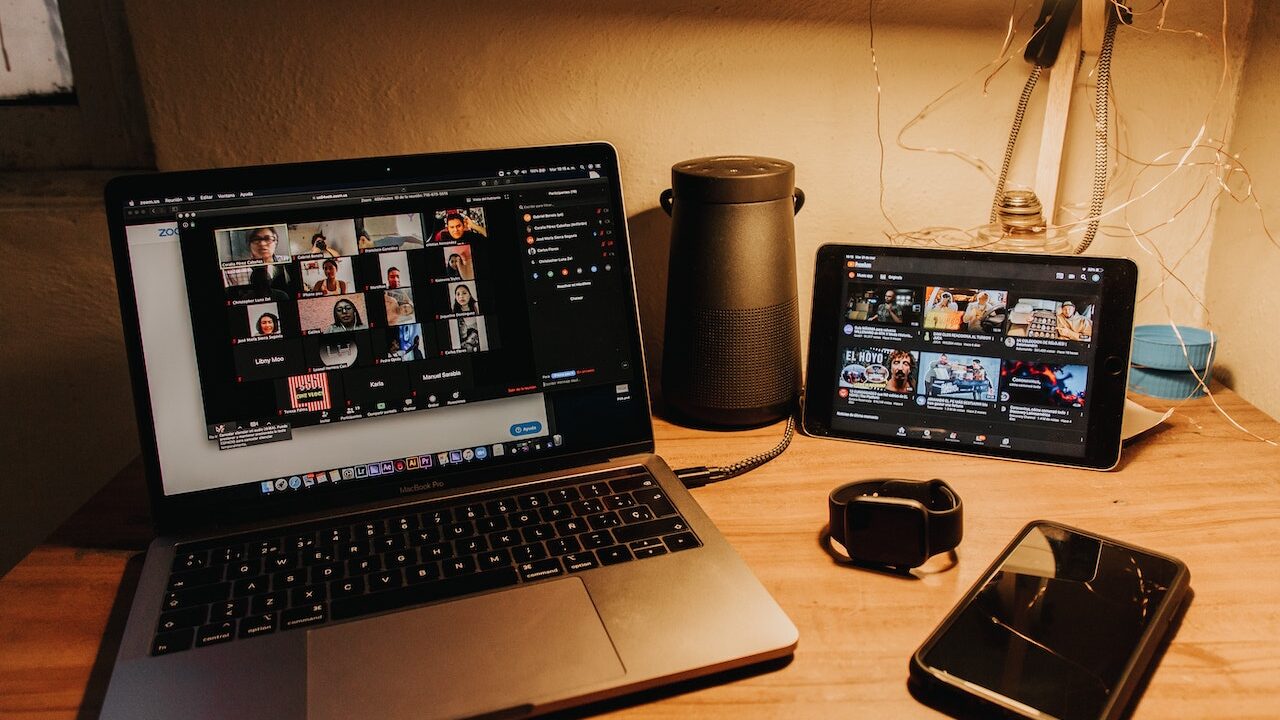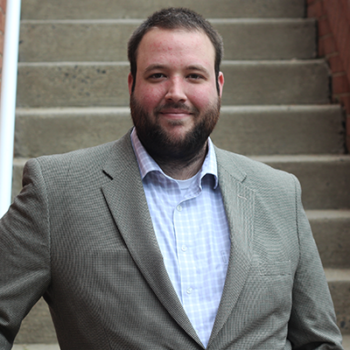With COVID-19 in the air and a presidential election around the corner, candidates and advocacy groups everywhere are facing campaigns without being able to talk to people face-to-face. And that means most, if not all, of their canvassing and organizing needs to move online. Campaigns need to build large lists of voters and supporters, complete with mobile phone, email, and social media contact information that they can use for multi-channel outreach, mobilizing, and organizing. And when we say organizing, we mean more than just getting a lot of people to share social media posts, email their legislators, or even bird-dog their representatives at a town hall (via Zoom, these days, of course). We mean building teams of volunteers who will help the campaign do all these things and more, whenever needed.
We distinguish between reaching an audience to raise their awareness, mobilizing some of them to take action, and organizing a smaller segment to become super-activists and volunteers. Thanks to the scalability of online communications, we can reach virtually anyone online via search, advertising, social media, websites, and email. Thanks to a variety of advocacy tools, we can mobilize many of those we reach to take action in support of a campaign. And, by using social media and other interactive channels to deepen our relationships with them, we can turn the best of our activists into volunteers and team leaders.

The first step is to identify your audience, target them with your messaging, and provide opportunities for them to take action. As we all know, most people we reach will not take action, so make sure that, as you reach out to them, you also raise awareness about your issue or candidate, as well as give them something to do. This requires blending persuasion and direct-action messaging.
We also know that using multiple channels to reach people reinforces the effectiveness of each of the outreach channels. Some channels are better for online direct action (e.g. email, Facebook Messenger, SMS), some are better for organizing offline action (e.g. Instagram, Facebook Groups, Twitter DM groups), and others are better for raising awareness and persuasion of both the grassroots and influencers (e.g. Twitter). Using them all in concert creates an incredibly robust hybrid awareness/direct action campaign.
Organizing with social distancing
COVID-19 has forced us all to make substantial changes to how we target and organize. For targeting, we need to rely more heavily on geofencing to find people. Thankfully, after six months of shutdown and social distancing, we can find the right audience by retroactively targeting them with geofencing as far back as a year. For example, if an organization would normally target music festivals with ads to move people into their funnel, they can still target the people who went to last year’s festivals, thanks to retroactive geofencing. It is not a perfect tool, but it can be extraordinarily effective when people are mostly stuck at home.
In addition to geofencing, social media content analysis and data matching services can be combined to identify promising target lists to move through the digital funnel, much like a traditional field funnel. And because social media offers a nice window into the views of each person targeted, organizers can know a little bit about someone before they reach out to recruit them.
As these technologies make it possible to target the people you want to mobilize and organize without face-to-face interactions, it is important to remember that this is a process of attrition. The Digital Organizing Funnel applies to both ad target and list acquisition, each reaching out to a very large audience in order to convert a smaller segment into activists and an even smaller segment into volunteers.
Geofencing can target people whose mobile devices are “geolocated” in a specific location at a specific time, but it will inevitably identify more than just the people you want. If you are looking for people who attended a Black Lives Matter protest, for example, you can map out the route of the march and provide a timeline for when it moves through the route, but you will still net bystanders, local residents, and people working along the route, not to mention counter-protesters using geofencing to target your audience.
Content analysis of social media, especially Twitter (which provides full access to its content), can also yield large lists of potential allies. In this case, you can find people who are sharing content that supports your campaign based on what they tweet. Even with highly honed search queries, though, you will identify some people on the other side of your campaign, such as people trying to use your language against you.
Lists generated from digital methods like geofencing and social content analysis, along with more traditional lists like voter files, can be matched to email, phone, and social media contact information for organizers to use much like they would a call or walk list. Voter file data makes parsing out lists based on neighborhoods easy. But instead of providing walk or call lists, you provide lists with information about how to connect with each person via Twitter, Facebook, Instagram, text message, or email.
Again, temper your expectations for high data match rates. No one vendor has an archive of all the data available. As a result, the data matching process is often a series of matches to databases owned by several data vendors. And, depending on which of those vendors you match with and the quality and scope of their data, your match rates will vary. Sometimes, they vary tremendously.
Still, in the end, these processes will yield large initial lists and a decent sized final list to start your organizing efforts. Once the target lists are in your organizers’ hands, they can start the work of reaching out to prospects to recruit them. Your organizers can contact each person through a variety of means; they can even check social media accounts for background information before reaching out. In effect, this process creates a virtual customer relations database to help your organizers go from “cold calls” to “warm calls” as they reach out to potential volunteers.
Organizing is hard work
Organizing is hard and expensive, regardless of whether it is online or offline. It takes a lot of work to build a team of volunteers that a campaign can rely upon to mobilize their own networks. Organizers need to create workspaces for their teams, many of them if they have multiple teams. These workspaces need to be easy to use. They should be places your team frequents out of habit to maximize their attention to your campaign.
For many years, digital organizers debated whether campaigns should build a new website or app to organize people or organize people where they are already hanging out online. The advantage of organizing people where they already are is that they have reasons to be there. People are using Facebook, Instagram, Twitter, and other social media platforms in their daily lives. They use them habitually. They use them often. So, it is advisable to find people there and organize them to join volunteer teams on those platforms (for example, using Facebook Groups to organize people on Facebook).
In some cases, you may be able to add additional new communication channels to connect and organize your teams, but only when it fits the circumstances. For example, if your volunteer team comprises high-level influencers on social media, their direct message inbox might be too noisy for them to see everything you share with the team in a timely manner. In this case, you may want to supplement communications with your team with an email list or a group chat on an app like WhatsApp or Signal.
On the flipside, if you are not providing the best channels for your volunteers to stay connected, they will find other ways to connect with each other. Keep tabs on what they do in this regard by occasionally asking folks in the volunteer group what they are doing outside of the Group to help your campaign — and modify your methods if you see an advantage in incorporating their new channels. Generally, when your community starts looking for better ways to collaborate, it means your community is really healthy. (Good work!)
Effective organizing on social media means working with volunteers in an environment where they feel empowered. Even if they do not have a large audience, they have the power to influence the audience that they have, often more effectively than BIG influencers with legions of followers. As organizers, we want to tap into that authentic power.
Organizing Teams by Social Media Platform
As organizing moves increasingly online, it is important to understand how each social media platform fits into your program. Facebook, for example, boasts the largest percentage of users among the American population, making it an essential organizing platform for many target audiences.
Facebook Groups are the natural place for organizing teams on the platform. Setting your Groups to private or secret turns them into walled-off, asynchronous meeting places for organizing your volunteers. They can accommodate a large number of people, though the larger they get, the more unruly they get. While Facebook sets no upper limit on the number of people in a Group, if you add more than 5,000 to it, some functions are turned off. But, more importantly, if you get beyond a few hundred or so in the group, your ability to keep a semblance of order starts to break down.
In some cases, especially when it comes to politics, teams can even break down at smaller sizes. On Twitter, where DM groups are limited to fifty people, teams can break down if there is a serious political rift in the room. Because Twitter DM rooms were not created specifically for ongoing team meetings, they afford little managerial control. For example, anyone in a DM room can change the room name and one person can block another from the room.
Still, if you want a timely way to get your team content to share, Twitter rooms can be extraordinarily efficient. Members can get notified when there is a post in the room. Links for retweeting pull up preview thumbnails. These features make Twitter DM rooms ideal for driving quick turnaround on your calls to share content, even if Twitter provides limited management tools for them.
For people who love more management tools, digital workplaces like Slack are ideal for team conversations. If you are on a lot of teams across a lot of organizations, Slack is great. That is why many professional organizers and campaigners love it. But if the people on your team are amateur activists, do not have a Slack habit, or are reluctant to learn a new tool, then moving them to Slack and away from the social media platform they prefer works less well.
A friend once recounted that he had a big-time client who never returned email promptly. But if he messaged him on Facebook, he responded almost immediately. That is the power of reaching the people you want to organize through their preferred channel.
Instagram, for a long time, was not a campaigner’s tool. It was good at broadcasting. It was good at hosting conversations around an image or video. So it was effective for branding and persuasion campaigns, but terrible for direct action because you could not put a link in a post. And there did not seem to be a lot of political or policy conversations on Instagram.
But in the time of COVID, Instagram quickly emerged as a great tool for organizing large protests and rallies. Not only has Instagram loosened its restrictions on sharing links (for example, if you have more than ten thousand followers, you can add links in your stories), but in the recent Black Lives Matters protests, Instagram is being used to effectively organize people offline. Images and videos of what is happening “right here, right now” with an address can move crowds of people from place to place within a city. These videos and images can also demonstrate how to reduce the risks of large gatherings by wearing masks and spreading out as you march.
The bottom line is that each social media platform can be useful for at least part of your efforts to move people from audience to activist to volunteer. The key is to figure out which platforms your target audiences use and focus on building your lists there; then, engage and organize your target audiences on those platforms, whenever possible. But remember that most people who use social media use more than one platform, at least to some degree, so we should work multiple platforms into campaigns and be aware of activists who can effectively cross-post for your campaign.
Bringing it all back home
Digital and social media are not new to campaigns, but in the time of COVID, they are more important than ever. To the extent that we cannot rely on face-to-face canvassing and tabling, we need to switch gears and move that work online. Social media, geofencing, and data matching technology and services not only make that shift possible but open the doors to doing it at a much greater scale. So much so that even when we get back to canvassing and tabling in person, digital organizing will remain an important part of the overall campaign effort.


